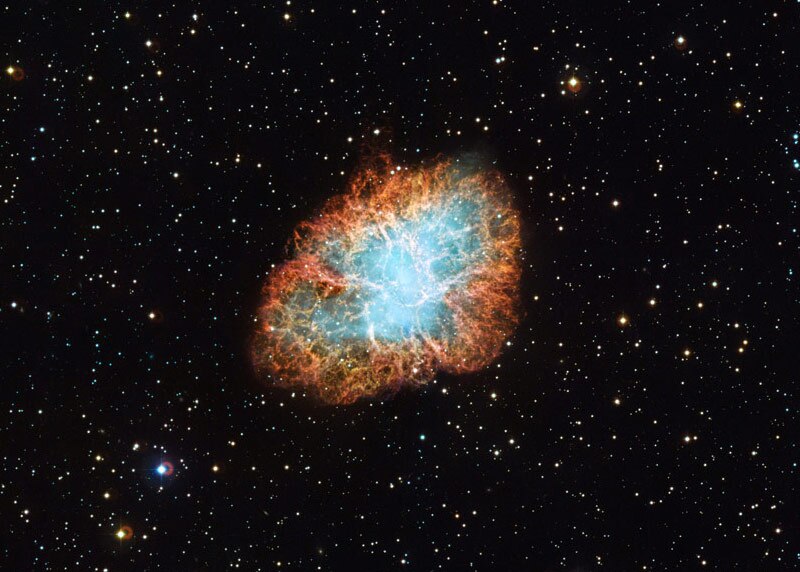Create a free profile to get unlimited access to exclusive videos, sweepstakes, and more!
Supernova Ozymandias

More than 6,000 light-years from Earth, a massive star was dying.
Its core was hot chaos. The star had been fusing hydrogen into helium for millions of years before running out of fuel. Then it started fusing helium into carbon, but then ran out of this fuel in just a million years. Carbon fusion initiated, churning it into neon for a millennium, then neon into magnesium for a single year. It fused the resulting oxygen into silicon, running out in just a few months. Just the day before—a single day, after all those eons!—it began fusing silicon into iron.
And it was doomed. Iron fusion is unsustainable. In a single instant the core collapsed, unleashing a fury of energy and subatomic particles that slammed into the material above.
The star exploded.
This is destruction on a scale our brains cannot truly grasp. Octillions of tons of matter were blasted outward at a significant fraction of the speed of light, and it briefly outshone every single star in the Milky Way galaxy combined. Traveling for six millennia, that wave of light finally washed over the Earth in the year 1054. A thousand years later, we now see the debris from the explosion as a glowing filamentary mass we call the Crab Nebula.
And it looks like this:
I am enamored of this picture. It was taken using the 2.2-meter MPG/ESO telescope in Chile, equipped with a camera called the Wide Field Imager. Usually, images of the Crab show it in loving detail, the tendrils and wisps of gas excruciatingly clear.
But I’ve observed the Crab countless times using binoculars and my own telescopes over the years, and it appears as just a faint patch of light amidst a thousand stars. This image is the best of both worlds, showing lovely detail but still putting the object in context.
The field of view of this image is a half degree, about the same size as the full Moon on the sky. The Crab is the result of one of the single most violent events the Universe has to offer, and this happened relatively close to Earth; the Milky Way is 100,000 light-years across, and the Crab is a small fraction of that distance away.
And yet, there it is, reduced in stature, almost subdued, a tribute not so much to the star-destroying power of a supernova but to the mind-crushing vastness of space.
Astronomy is more than just a science. It provides a fascinating glimpse into the contrasts of nature. Even the mightiest events since the beginning of time itself succumb to simple distance.


























